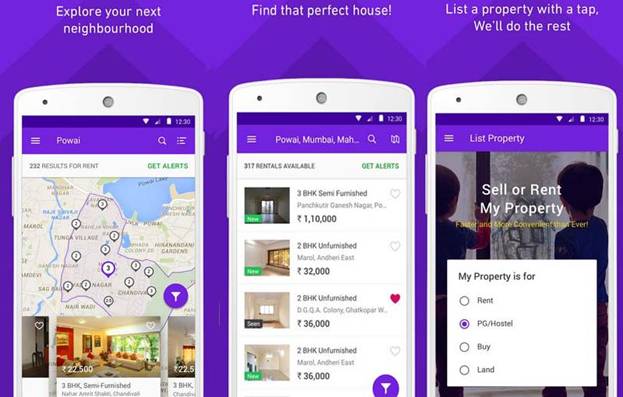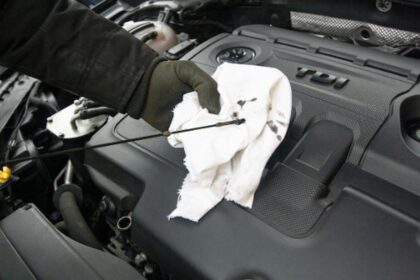Are you wondering how to update Bluetooth on your Mac the right way? If so, we’ve got you covered. Click here to learn more!
A staggering five billion — that’s how many folks around the world own a mobile device. In the US alone, eight in 10 Americans have a smartphone.
If you’re one of them, chances are, you use Bluetooth often.
Bluetooth, after all, is the technology that allows for wireless connections between devices. It’s become such a vital feature that by 2023, the Bluetooth Smart market will be worth an estimated $5.4 billion. The Wireless Bluetooth Headphones sector alone is set to reach a value of $120 billion by 2026.
Just like most tech gear though, you also need to update Bluetooth software and hardware. That includes their drivers, as well as the Bluetooth components in your Mac. Otherwise, you’ll experience dropped connections or seeing “Bluetooth: Not Available” on your Mac.
Ready to learn how to keep your Bluetooth devices updated and running right? Then let’s get right into it!
A Primer on External Bluetooth Devices and Their Drivers
External Bluetooth devices have drivers that allow them to connect with your Mac. In many cases, you need to install these drivers first so that you can use them with your Apple computer.
Depending on the device, Apple may consider it class-compliant. In this case, you only need to connect the device to and pair it with your Mac.
If your Mac doesn’t recognize the device though, it’ll require additional driver installation. This is for your own safety, as it protects you from nefarious potential software threats.
Keep in mind that malware detections on Macs have increased by almost 2.5 times from 2018 to 2019. So, as a safety precaution, be sure that your driver comes from a trusted app developer.
Also, note that these drivers can get uninstalled or become buggy when you make major changes to your Mac. For instance, some older drivers may become incompatible with the latest macOS version. It’s during these cases that you’re likely to encounter a Bluetooth connection problem.
That said, most Bluetooth connection issues are resolvable through driver updates. So, if you ever run into Bluetooth problems, the drivers are one of the first things you should check.
Remove Outdated Drivers
Some Bluetooth devices, such as printers, only need a one-time connection with your Mac. The driver installation usually occurs after connecting the device via USB.
If these become corrupted or outdated, it may be best to remove the Bluetooth device itself from your Mac. After that, you can simply install or download new drivers.
To remove buggy Bluetooth connections, open “System Preferences” (via Spotlight Search or Launchpad). Click the “Bluetooth” preference panel to display all devices paired with your Mac. Then, locate and highlight the device you want to remove from your Mac and click the “X” button.
Re-Install Drivers via USB
Printers and scanners are common devices that require a driver installation via USB. If you’ve removed the drivers of these devices from your Mac, you may just have to connect them again via USB. Doing so will give you a message on your Mac regarding the driver installation.
Follow the instructions to get those drivers re-installed on your Apple computer.
Update Bluetooth Drivers via the Internet
Other devices may require you to download their drivers from the manufacturer’s website. If it’s an “unrecognized” developer, you need to tweak your download settings first.
To do this, open System Preferences again. Then, click on the “Security & Privacy” preference panel.
Under the “General” tab, look for the lock icon at the very bottom of the window. Click on that to unlock your General settings (you may have to enter your Mac’s login password). Select “App Store and identified developers” and click the lock icon once more to save the changes.
You can now download and install your Bluetooth device’s latest drivers to your Mac.
Create Fresh Bluetooth PLIST Files
Another way to “update” Bluetooth connections on your Mac is to “recreate” their PLIST files. These are settings files, or “properties files” used by macOS-running devices. They contain configuration and property settings for many types of programs, including Bluetooth.
When you delete these files, your Mac will automatically recreate them after restarting. There are two PLIST you want to remove:
- com.apple.Bluetooth.plist
- A file that starts with “com.apple.Bluetooth”, followed by alphanumerics and ends in .plist
To remove the first file, open Spotlight Search. Type “/Library/Preferences” (without the quotation marks) and then hit enter. Look for the files in the folder and drag it to the Trash or select and choose “Move to Trash”.
To get rid of the second PLIST file, open a Finder window again and then click “Go” then select “Go to Folder”. Type “/Library/Preferences/ByHost” (without the quotes) in the text box and then hit “Go” again. Look for the second file and drag or move it to your Trash folder.
Make sure to turn off your Mac’s Bluetooth and to remove any connected USB device. Restart your Mac and then try to pair it with your Bluetooth devices again.
Update Your macOS
If you haven’t automated your Mac to download and install macOS updates, now’s the best time to. This way, you don’t have to do a manual search, download, and installation of bug fixes and OS updates. Moreover, an up-to-date macOS helps protect you from malware.
Just so you know, one in five high-risk cyber threats has something to do with outdated software. This can result in missing patches too, which can also attract dangerous software. Of course, it can also interfere with the proper functioning of your Mac’s Bluetooth.
To check for macOS updates, start by clicking the Apple icon or logo on the upper left-hand corner of your screen. Select “About This Mac”, which should open a new window. Look for the “Software Update” option and click on that.
A new window should pop up, listing any available updates. Update your macOS if there’s one available. It’s also on this window where you can select “Automatically keep my Mac up to date”.
Hopefully, these steps will make your Mac reconnect with your Bluetooth gear. If not, you may want to check out . There are a few more steps there that may help you get your Bluetooth devices working again.
Keep Your Bluetooth Connections Strong
There you have it, the proper ways to update Bluetooth drivers in external devices and your Mac. As a final tip, automate your Mac to download trusted third-party software updates too. This way, you can reduce the risks that come with outdated software.
Ready for more techy guides like this? Feel free to check out the rest of the posts we have under this site’s Tech section then!





